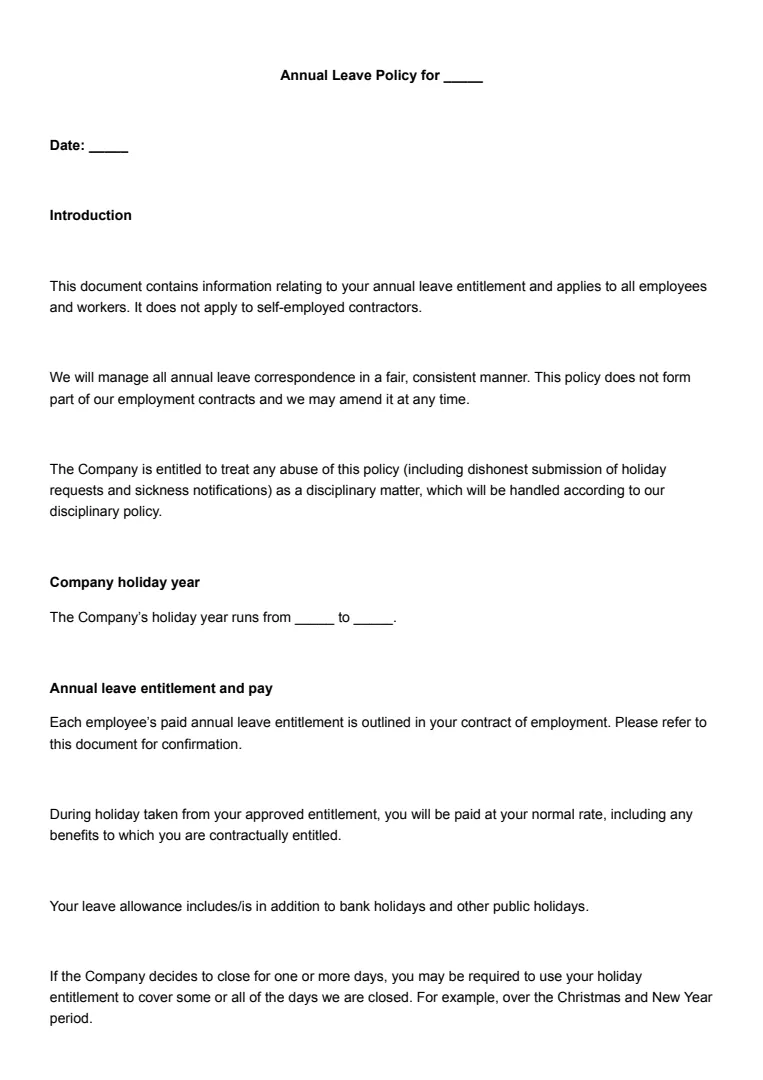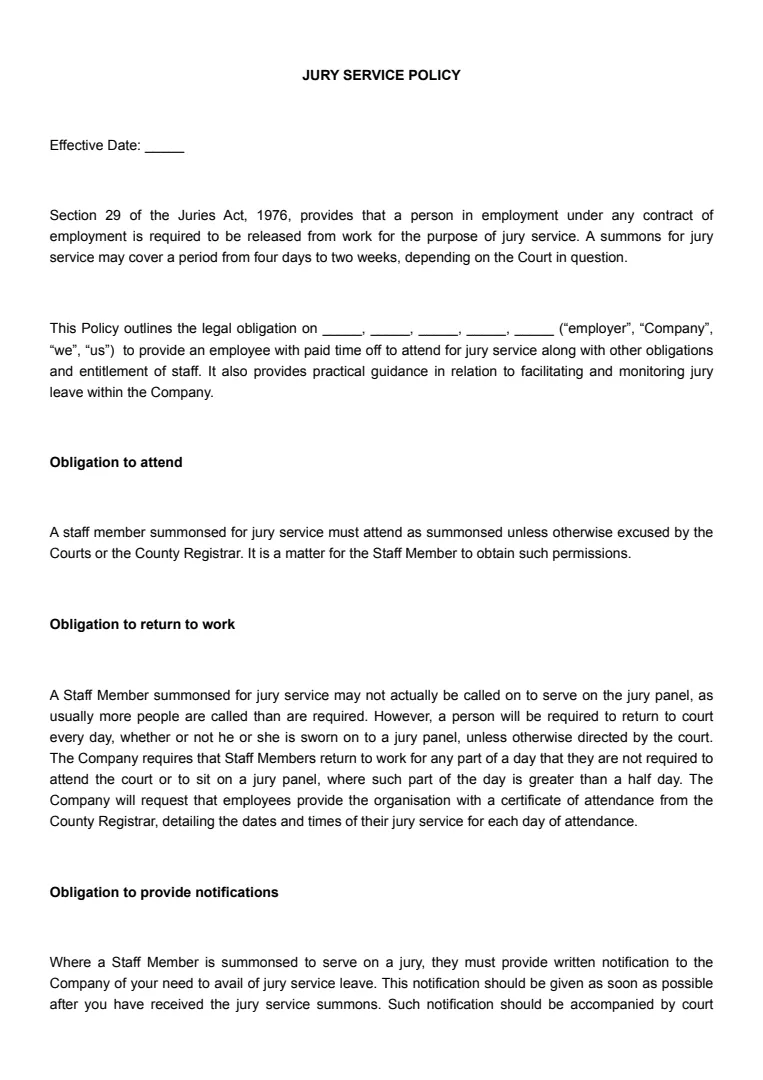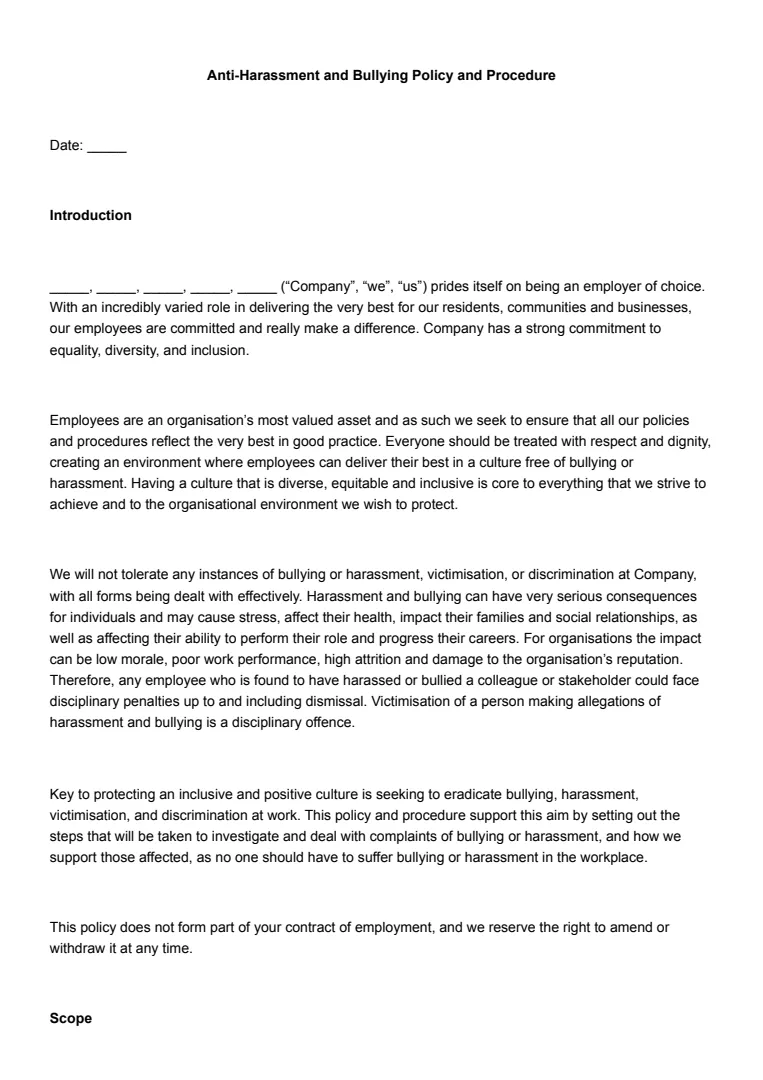What Is an Annual Leave Policy?
An annual leave policy is like a guide that explains how much time off you can take from work in a year. It's part of your compensation and ensures you get a break from work, whether for holidays or personal reasons.
Usually, the policy details how to apply for this leave. It could be as simple as informing your manager via email or using an online system to request time off. This application process makes it easier for both you and your employer to plan.
In many cases, you can carry over some unused days into the next year, though there might be limits. These will be clearly stated in the annual leave policy.
An effective annual leave policy also caters to both full-time and part-time employees. It aims to balance your personal time with work commitments and helps you recharge without feeling guilty. It will clarify your rights and responsibilities so you know exactly how to manage your time off.
As an employee, a comprehensive policy supports your well-being. As an employer, providing a clear annual leave policy contributes to a happier and more productive work environment.
When Is an Annual Leave Policy Needed?
An annual leave policy is key for any organisation, no matter the size. Business operations benefit when there's a clear annual leave policy.
If you're managing a team, it's essential to have clear guidelines for holidays, rest, and personal days. It ensures that everyone knows their entitlements and helps maintain work-life balance.
With a busy team, make sure you know who’s in and out of the office to keep things running smoothly. A well-thought-out policy keeps your team organised and helps avoid scheduling conflicts.
Handling unexpected absences becomes easier with an annual leave policy. Whether there's a family emergency or an unexpected personal matter, your team has a framework for requesting time off. This minimises disruptions and allows for smoother transitions when employees need to step away from work.
When you're navigating legal compliance, having an annual leave policy is necessary. The UK has laws about minimum holiday entitlements. A policy ensures your organisation meets these requirements, avoiding potential legal issues down the road.
An annual leave policy is also important for retaining talent. Employees appreciate a policy that clearly outlines their benefits, making them feel valued.
With clarity in holiday entitlements, you create a more motivated and loyal team, reducing turnover rates.
How to Write an Annual Leave Policy
As an employer, you’re legally required to have an annual leave policy in place. Creating a comprehensive, clear policy is easy if you follow these steps. You can also use an annual leave policy template or a holiday policy template for the UK to guide you.
Step 1: Start With the Basics
When crafting an annual leave policy, begin by outlining the core components. Specify the purpose of the policy, ensuring it aligns with your broader company goals.
Identify who the policy applies to, whether it's just full-time employees or includes part-timers and contractors.
Clarifying this scope sets the foundation for clear expectations.
Step 2: Define Holiday Entitlement
Next, detail the holiday entitlement. Determine how much paid leave each employee gets. For example, full-time workers might earn 28 days annually, including bank holidays.
Ensure this is clearly stated and easy to understand. Think about whether this differs for part-time or temporary staff.
Step 3: Outline Leave Request Procedures
Create user-friendly procedures for requesting leave. Outline how employees should submit their requests and the timeline for doing so.
Specify how far in advance leave should be requested, and consider providing an example of a well-composed request to guide employees.
Step 4: Address Leave Approval Process
Clarify how requests will be evaluated and approved. Specify who will review these requests, how decisions will be made, and any factors that might influence the decision.
This step will help manage expectations and ensure transparency.
Step 5: Include Special Circumstances
Factor in any special circumstances or exceptions within your policy. This could include rules for carrying over unused leave, how to handle public holidays, or adjustments for long-term employees.
Addressing these in your policy helps avoid confusion later on.
Step 6: Review and Adjust
Finally, it's crucial to regularly review the policy. Make updates as needed to reflect any changes in company structure or employment law.
Regular reviews help keep the policy relevant and compliant.













